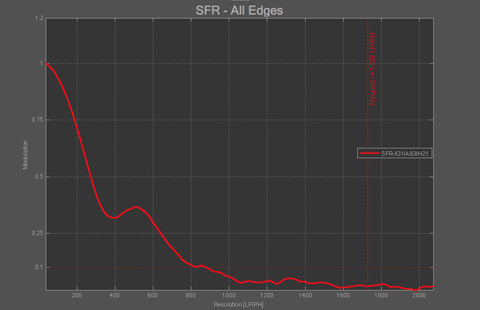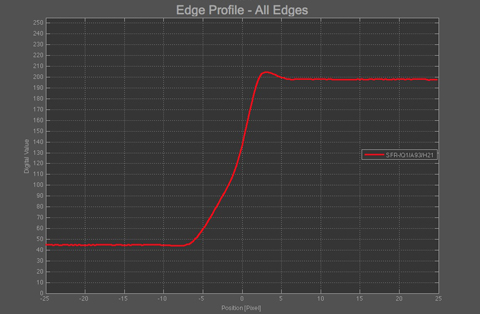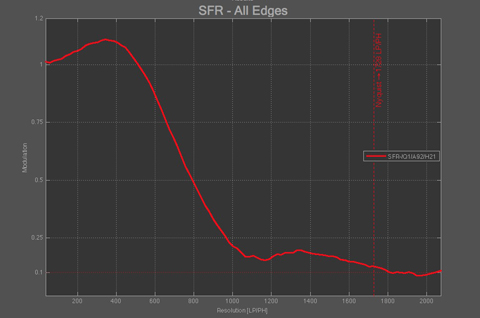The SFR-Edge algorithm uses a slanted edge to perform the measurement of the spatial frequency response. One very important step in this calculation is the generation of the edge spread function. And to generate this function, the location of the edge in the image is a very important information.

» see paper EIC2010
In the previous approach, we have implemented it in the very common way, that we have fitted a line along the edge. But what if the edge is slightly bended, due to lens distortion ?
This will effect the edge spread function dramatically as it is build based on the distance of each pixel in the image to the fitted line. And as a simple line can not describe the bended edge in a good way, this fit error will influence the results.

In the iQ-Analyzer Version 5, we have improved this algorithm. Instead of just fit a straight line, we use more flexible fit algorithm for this task. This reduces the error dramatically and the fitted line matches the bended edge nicely. The Fit-Error has reduced from 62.1 to 7.2. Compare the two results with and without new fit of the line and see how important this adaptation can be.
 In these images, we have visualized what happens: The red line shows the fitted line. If just a straight line is used, we can not follow the edge in the image. With the higher degree fit, we can and the fitted line follows the edge.
In these images, we have visualized what happens: The red line shows the fitted line. If just a straight line is used, we can not follow the edge in the image. With the higher degree fit, we can and the fitted line follows the edge.
ua

